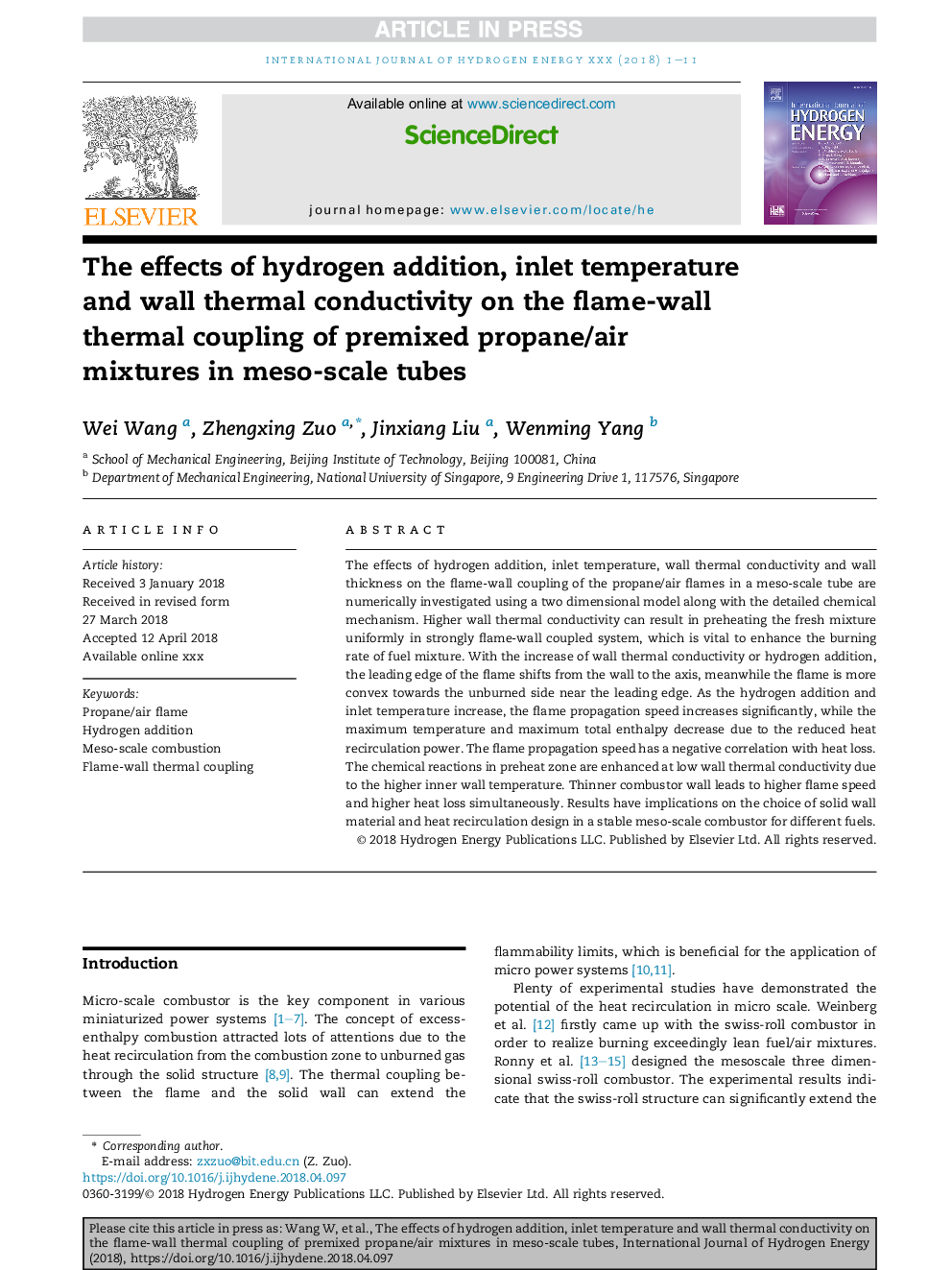| Article ID | Journal | Published Year | Pages | File Type |
|---|---|---|---|---|
| 7706000 | International Journal of Hydrogen Energy | 2018 | 11 Pages |
Abstract
The effects of hydrogen addition, inlet temperature, wall thermal conductivity and wall thickness on the flame-wall coupling of the propane/air flames in a meso-scale tube are numerically investigated using a two dimensional model along with the detailed chemical mechanism. Higher wall thermal conductivity can result in preheating the fresh mixture uniformly in strongly flame-wall coupled system, which is vital to enhance the burning rate of fuel mixture. With the increase of wall thermal conductivity or hydrogen addition, the leading edge of the flame shifts from the wall to the axis, meanwhile the flame is more convex towards the unburned side near the leading edge. As the hydrogen addition and inlet temperature increase, the flame propagation speed increases significantly, while the maximum temperature and maximum total enthalpy decrease due to the reduced heat recirculation power. The flame propagation speed has a negative correlation with heat loss. The chemical reactions in preheat zone are enhanced at low wall thermal conductivity due to the higher inner wall temperature. Thinner combustor wall leads to higher flame speed and higher heat loss simultaneously. Results have implications on the choice of solid wall material and heat recirculation design in a stable meso-scale combustor for different fuels.
Related Topics
Physical Sciences and Engineering
Chemistry
Electrochemistry
Authors
Wei Wang, Zhengxing Zuo, Jinxiang Liu, Wenming Yang,
